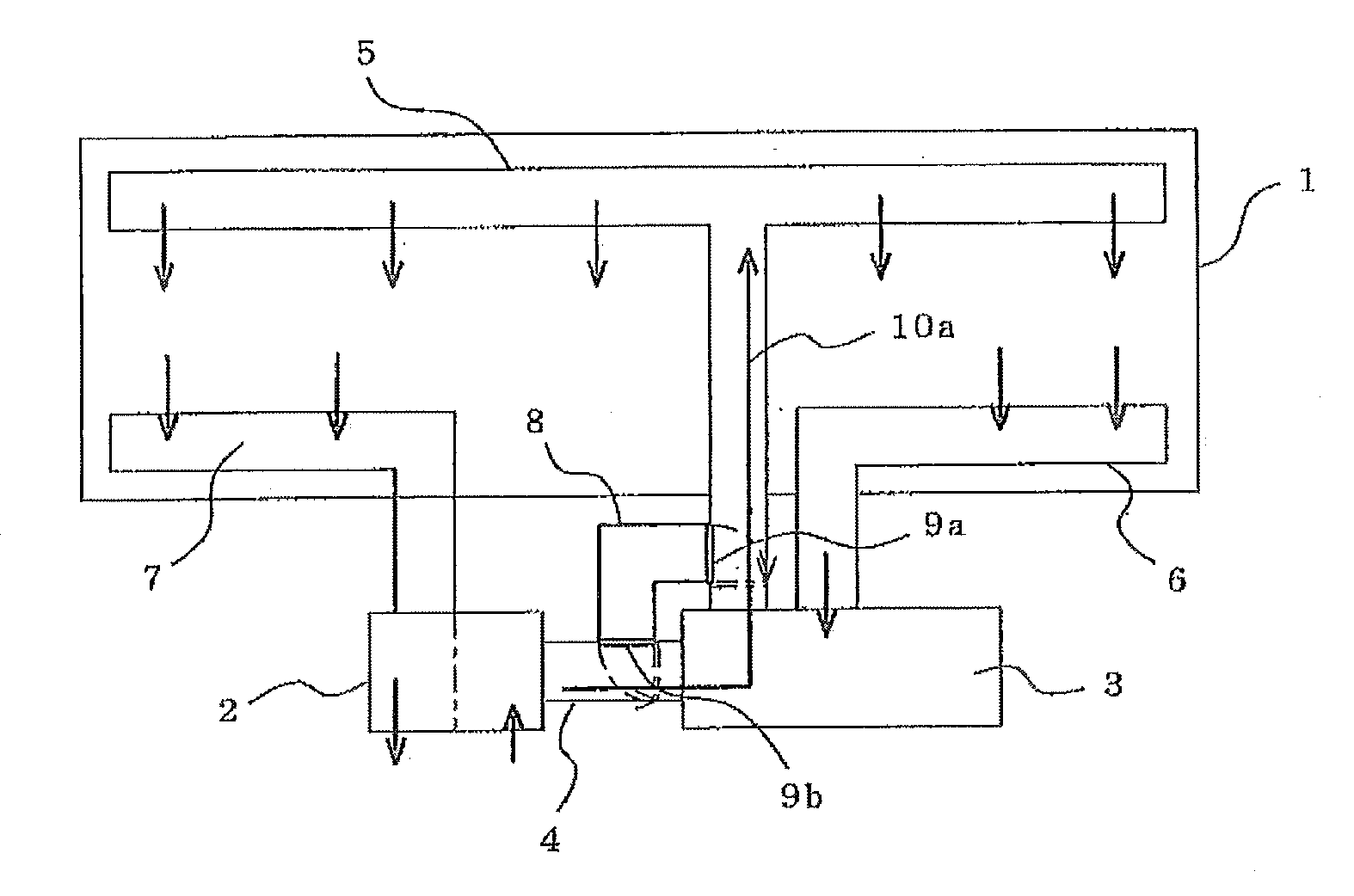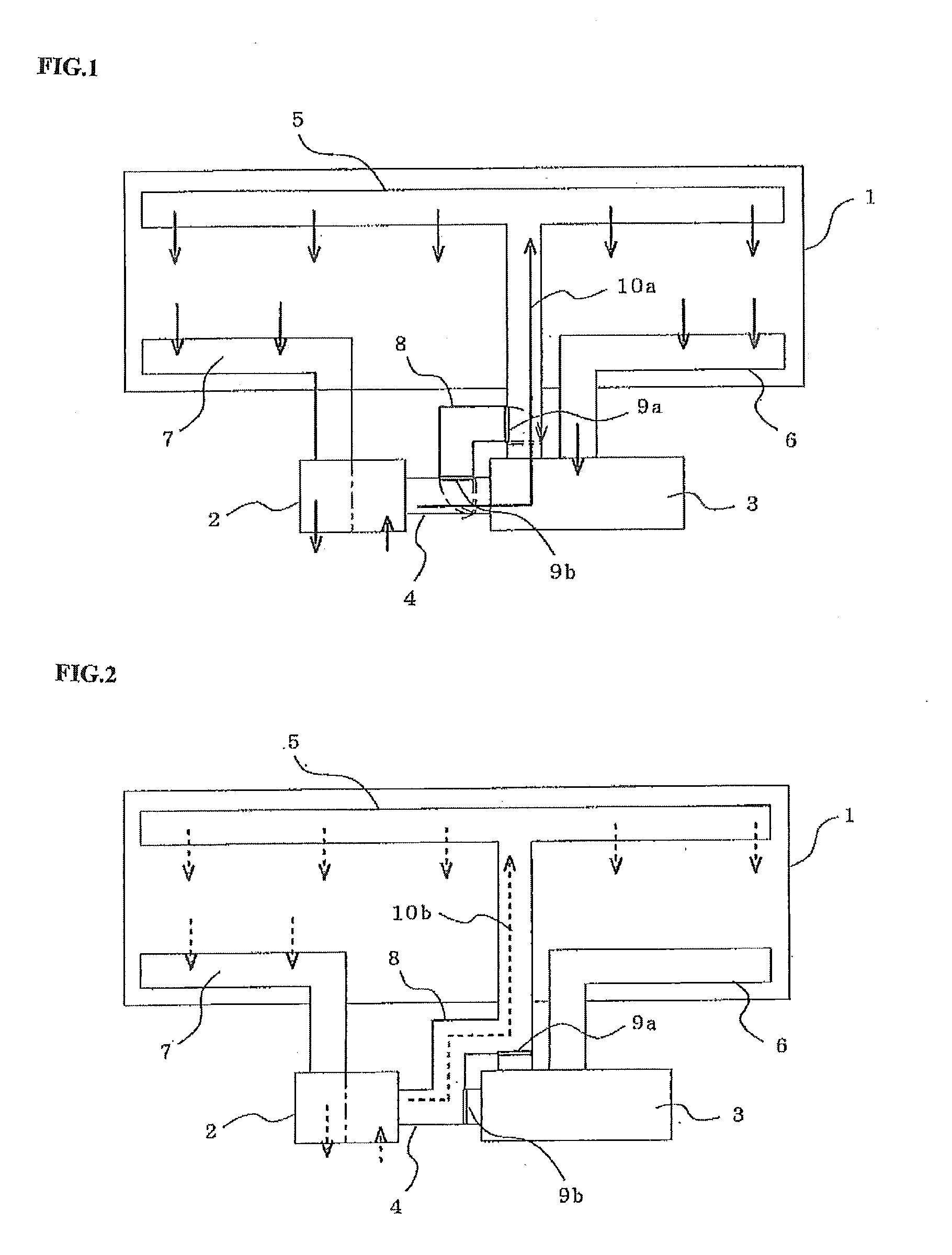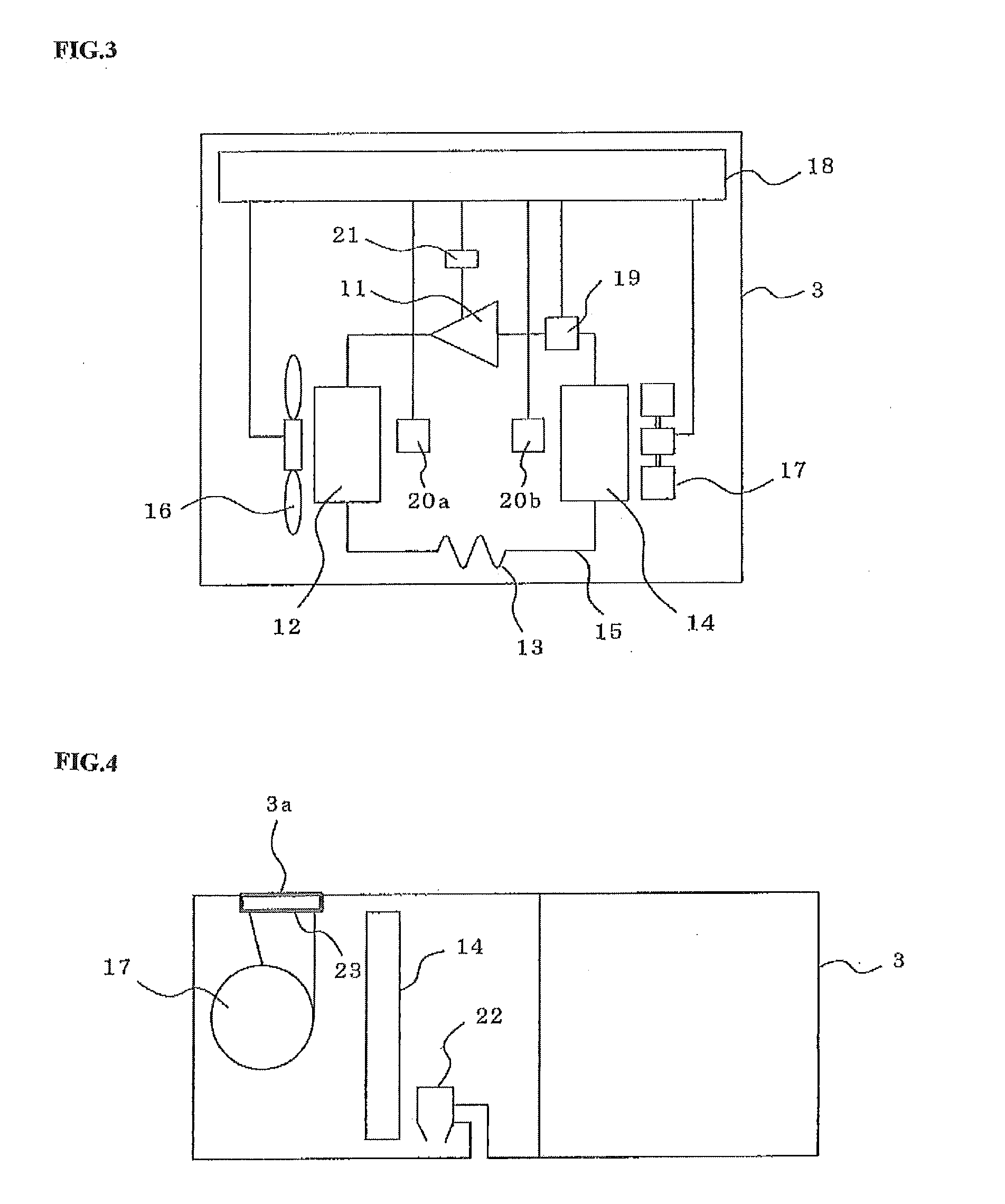Ventilation and air conditioning apparatus for vehicle
a technology for air conditioning apparatus and vehicle, which is applied in the direction of refrigeration components, light and heating apparatus, transportation and packaging, etc., to achieve the effect of ensuring the amount of ventilation
- Summary
- Abstract
- Description
- Claims
- Application Information
AI Technical Summary
Benefits of technology
Problems solved by technology
Method used
Image
Examples
first embodiment
[0017]FIG. 1 is a configuration diagram of a ventilation and air conditioning apparatus for a vehicle according to a first embodiment 1 of the present invention.
[0018]In FIG. 1, reference numeral 1 denotes a vehicle, 2 denotes a ventilator, 3 denotes an air conditioner, 4 denotes a duct for fresh outside air, 5 denotes a duct for conditioned air, 6 denotes a return flow duct, 7 denotes an exhaust duct, 8 denotes a bypass duct, 9a denotes a first damper, 9b denotes a second damper, and 10a denotes an air flow direction at the normal time.
[0019]The ventilator 2 sucks air inside the vehicle through the exhaust duct 7 and discharges the air outside the vehicle.
[0020]Further, the ventilator 2 sucks fresh air outside the vehicle and supplies the fresh air to the air conditioner 3 through the duct 4 for fresh outside air or supplies the fresh air inside the vehicle through the bypass duct 8 and duct 5 for conditioned air. This air flow will be described later again.
[0021]The air conditione...
second embodiment
[0062]As a second embodiment of the present invention, a configuration example of the air conditioner 3 will be described. The configurations of other components are the same as those in the first embodiment.
[0063]FIG. 3 is an internal configuration diagram of the air conditioner 3.
[0064]In FIG. 3, reference numeral 11 denotes a compressor, 12 denotes an outdoor heat exchanger, 13 denotes a capillary tube, 14 denotes an indoor heat exchanger, 15 denotes a refrigerant pipe, 16 denotes an outdoor blower, 17 denotes an indoor blower, 18 denotes an air conditioning controller, 19 denotes a refrigerant pressure sensor, 20a denotes an air temperature sensor provided on the upstream side of the outdoor heat exchanger, 20b denotes an air temperature sensor provided on the upstream side of the indoor heat exchanger, and 21 denotes a compressor current sensor.
[0065]The air conditioner 3 has a vapor compression refrigeration cycle constituted by the compressor 11, outdoor heat exchanger 12, ca...
third embodiment
[0078]FIG. 4 is a traverse cross-sectional view of the air conditioner 3 according to a third embodiment of the present invention.
[0079]In FIG. 4, reference numeral 22 denotes a drain pump for discharging condensed water accumulated in the lower portion of the indoor heat exchanger 14 from the bottom surface of the air conditioner to the outside of the vehicle. The drain pump 22 operates according to an instruction from the air conditioning controller 18. Reference numeral 23 denotes an ultraviolet lamp provided in the vicinity (e.g., blowout port of the indoor blower 17) of a blowout port 3a of the air conditioner 3. The ultraviolet lamp is always turned ON during operation of the air conditioner 3 and, when a refrigerant leakage has occurred in the air conditioner 3, the refrigerant flowing from the air conditioner 3 into the duct 5 for conditioned air is decomposed by ultraviolet ray emitted from the ultraviolet lamp.
[0080]Other components not shown in FIG. 4 have the same config...
PUM
 Login to View More
Login to View More Abstract
Description
Claims
Application Information
 Login to View More
Login to View More - R&D
- Intellectual Property
- Life Sciences
- Materials
- Tech Scout
- Unparalleled Data Quality
- Higher Quality Content
- 60% Fewer Hallucinations
Browse by: Latest US Patents, China's latest patents, Technical Efficacy Thesaurus, Application Domain, Technology Topic, Popular Technical Reports.
© 2025 PatSnap. All rights reserved.Legal|Privacy policy|Modern Slavery Act Transparency Statement|Sitemap|About US| Contact US: help@patsnap.com



